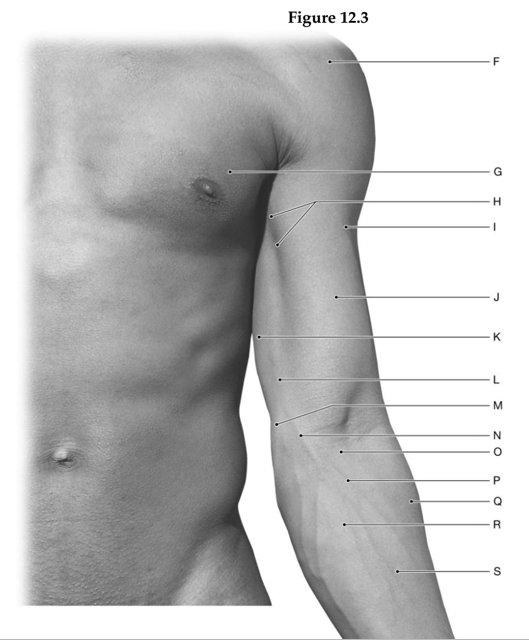Which term refers to hormones that work on neighboring cells without having to go through blood to get to target tissue?
A. Pheromone
B. Endocrine
C. Autocrine
D. Paracrine
Answer: D
You might also like to view...
You are sitting at a Mexican restaurant waiting for your food. The waiter brings a very hot plate, telling you to be careful about touching it. You touch it anyway, producing a pain sensation in your fingers, a withdrawal of your hand, and an auditory comment of what you are thinking. This scenario represents a ________ neuronal circuit
A) parallel processing B) reverberating C) serial processing D) convergent E) divergent
Using the figure above, identify the labeled part.

1. Label A: ______________________________
2. Label B: ______________________________
3. Label C: ______________________________
4. Label D: ______________________________
5. Label E: ______________________________
6. Label F: ______________________________
7. Label G: ______________________________
8. Label H: ______________________________
9. Label I: ______________________________
10. Label J: ______________________________
11. Label K: ______________________________
12. Label L: ______________________________
13. Label M: ______________________________
14. Label N: ______________________________
15. Label O: ______________________________
16. Label P: ______________________________
17. Label Q: ______________________________
18. Label R: ______________________________
19. Label S: ______________________________
20. Label T: ______________________________
21. Label U: ______________________________
Cell bodies of these neurons lie in ganglia in the peripheral nervous system (PNS)
A) sensory neurons B) motor neurons C) interneurons
Define hemolytic disease of the newborn (HDN)
A) Hemolytic disease of the newborn is a congenital defect in the development of the heart. B) Hemolytic disease of the newborn is a result of delayed bone marrow development. C) Hemolytic disease of the newborn is a result of abnormally shaped hemoglobin molecules. D) Hemolytic disease of the newborn is due to a deficiency in the numbers of red blood cells produced, resulting in anemia. E) Hemolytic disease of the newborn is a condition in which maternal Rh antibodies attack and destroy fetal Rh-positive red blood cells, resulting in anemia.